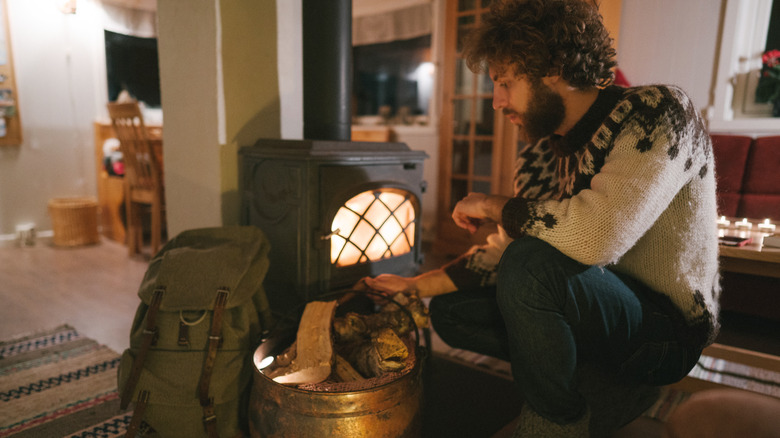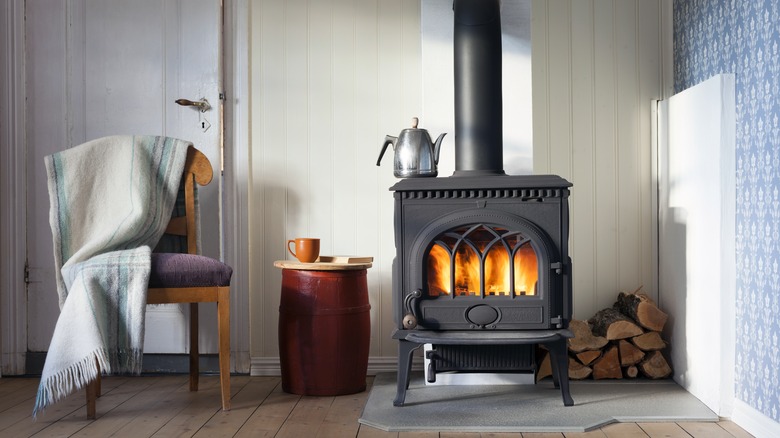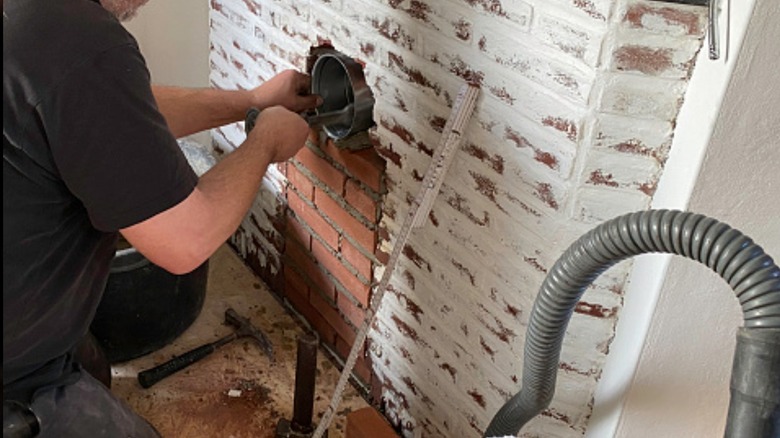DIY Wood Burning Stoves: Good Way To Save Money Or Bad Idea? Our Handyperson Weighs In
You might be thinking about getting a wood-burning stove if you're looking for a way to keep your home warm and cozy in winter without jacking up your utility bills. You may want to DIY this project and either make or install the stove yourself to cut costs, but this could be a bad idea, according to our expert. Brett Labeka, a virtual handyperson expert with Frontdoor, spoke exclusively with House Digest about the safety of DIYing a wood stove.
Labeka explained that this job is best left to the professionals, as this project could pose serious dangers, especially if you aren't knowledgeable about wood stoves. "Never attempt to install or service a wood stove by yourself," Labeka said. "Remember, you are installing a device in your home that uses fire, requires specialized knowledge, and carries an extremely high risk to you and your family if not installed correctly." Besides potential fire risks, you'll also need to consider your local building codes and regulations to ensure your wood-burning stove is up to standard.
Safety precautions when choosing and installing wood-burning stoves
When picking out a wood stove, Brett Labeka exclusively told House Digest about the importance of asking a professional what stoves are safe for your home and fit your needs specifically. "The EPA maintains a database of EPA-certified wood stoves. However, it's best to consult with experienced hearth product retailers who understand the performance characteristics of the products they sell. When visiting local retailers, bring along a floor plan of your home; knowledgeable retailers can help you select a wood stove, fireplace insert, or other hearth product that is suitable for the space you want to heat."
While there are benefits of wood-burning stoves, you'll need a safe, professional installation to make sure your stove works properly. Labeka explained that this should include checking that your wood stove won't be placed near anything combustible and ensuring that the materials of the walls and floor around the stove are fire-resistant. Additionally, carbon monoxide and smoke detectors should be installed to make sure that the stove is not putting off harmful fumes.
What to know about installing wood-burning stoves
Brett Labeka explained to House Digest in an exclusive interview that there are several factors to consider when deciding to install a wood stove and when choosing what kind of stove to install. While you may want to install a wood-burning stove to try to save money, Labeka warns that this heating system could possibly increase the cost of your home insurance. This is why it's essential to consider how much it could cost to install and operate a wood stove in your home. "Do your research and learn everything you need to know before choosing the right wood stove," Labeka told House Digest.
Additionally, Labeka said it's important to think about the installation process itself, such as how your wood-burning stove will be ventilated, what kind of flue system it needs, and what parts will be required to install it. Because of all the factors and potential dangers, DIYing a wood-burning stove just isn't a good idea.


